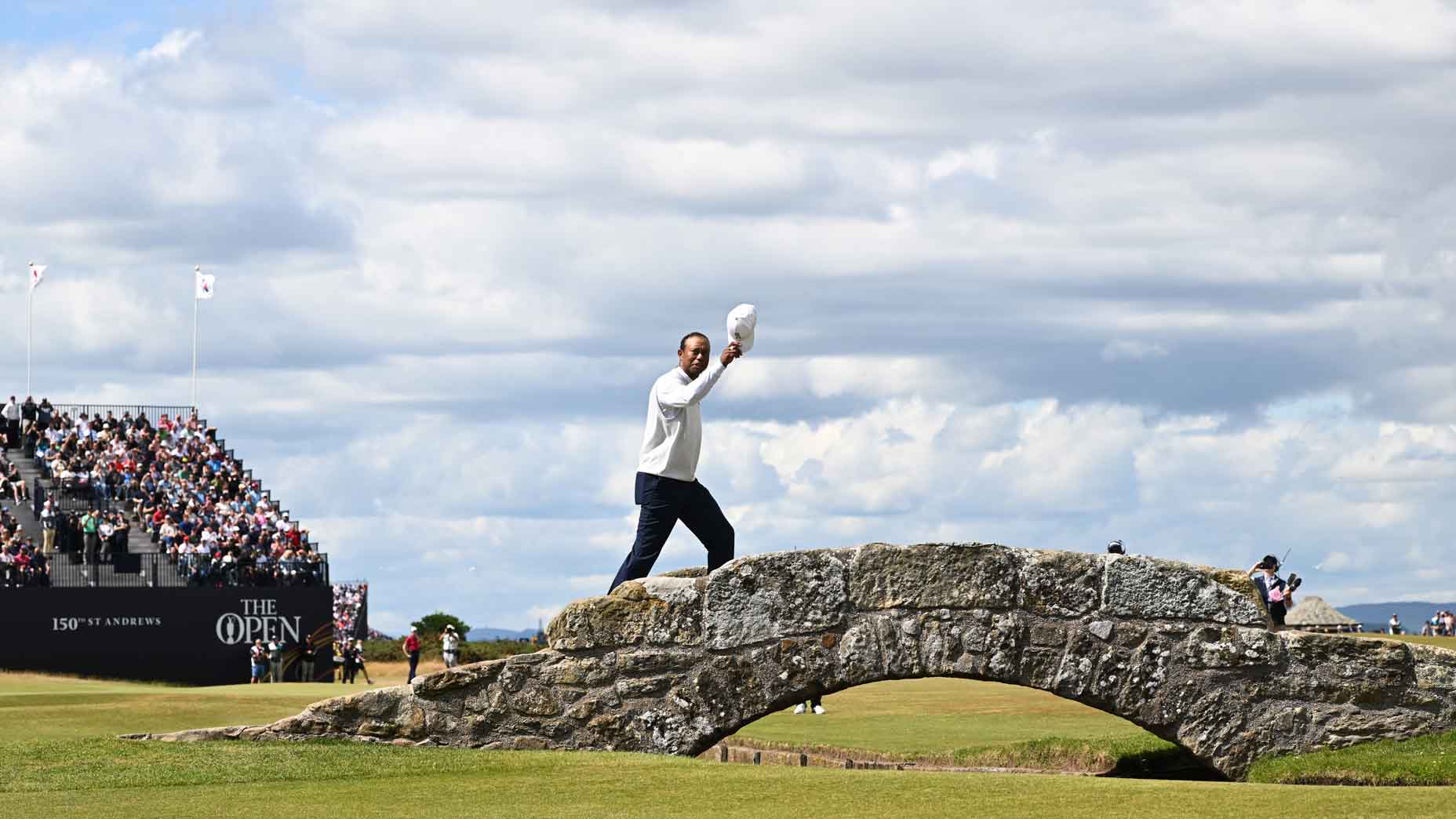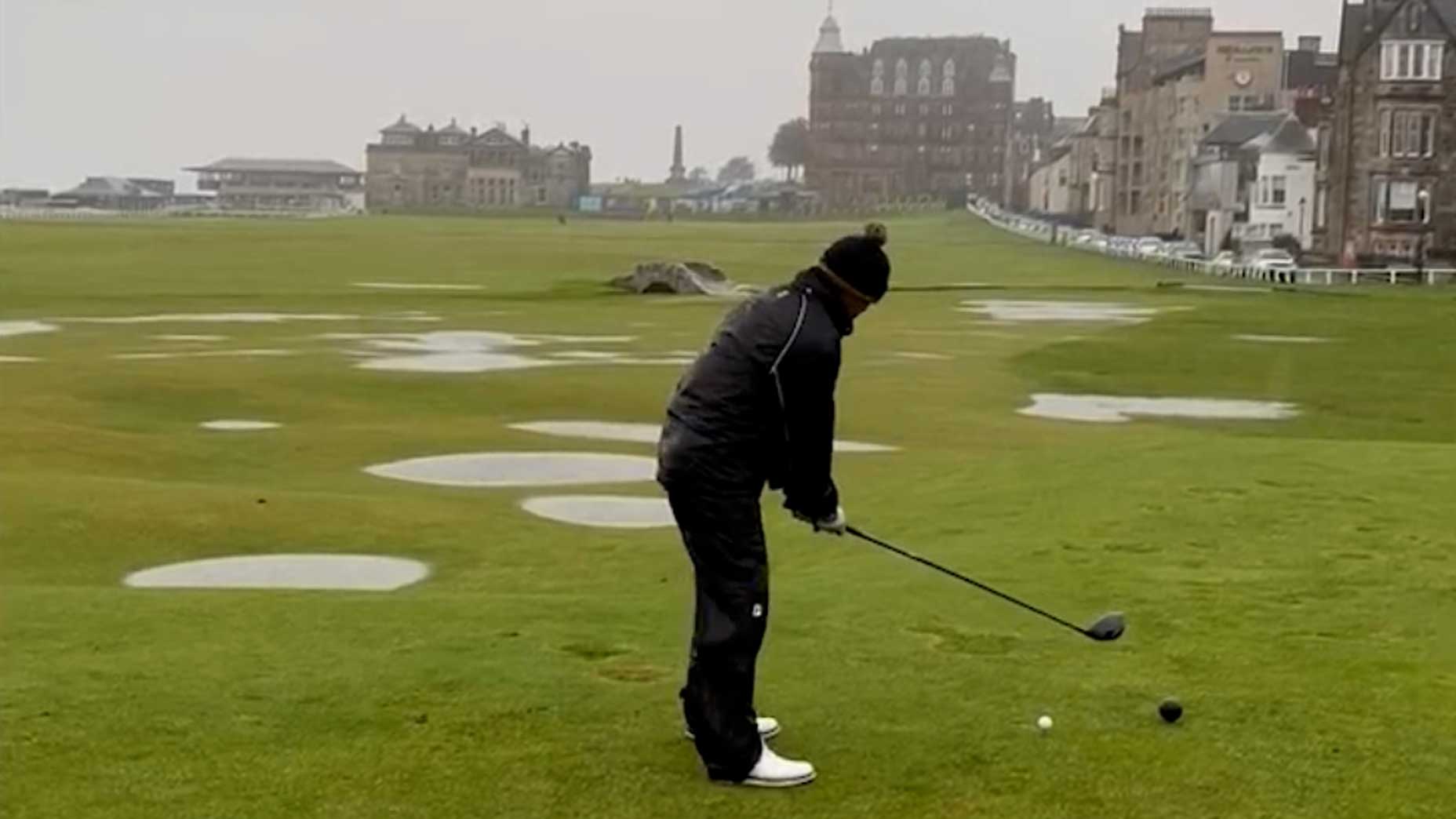After outcry, St. Andrews reverses course on Swilcan Bridge’s new look

Tiger Woods, during last year's Open Championship, crosses the Swilcan Bridge at St. Andrews.
Getty Images
The Home of Golf won’t have a new patio after all.
One day after defending its move to install circular, stone-based formations on both sides of its iconic Swilcan Bridge, St. Andrews changed its mind Monday and said the patio-like structure will be removed. In a release at around 6:30 p.m. local time, the minders of the iconic course said they would be “unable to create a look which is in keeping with its iconic setting” and also cited “feedback” in their decision.
“The exploratory works around the approach to and from the Swilcan Bridge had been undertaken as part of ongoing attempts to mitigate the issue of significant wear and tear to the turf,” the statement said. “In recent years we have identified and trialled a number of solutions, with the primary ambition always to find something that is both adequate for the amount of foot traffic for such a popular location whilst being in keeping with its surroundings.
“The stonework at the approach and exit of the bridge was identified as one possible long term solution, however while this installation would have provided some protection, in this instance we believe we are unable to create a look which is in keeping with its iconic setting and have taken the decision to remove it.
“We have also taken on feedback from many partners and stakeholders as well as the golfing public and we would like to thank everyone who has been in touch for their contribution to the issue. The widespread attention and commentary is indicative of the regard in which St Andrews is held around the world and we are conscious of our role in preserving this heritage while recognising its hallowed grounds have continued to evolve to meet demands for more than 600 years.”
Monday’s statement was the latest twist in what was essentially a two-day Patiogate.
It started Saturday, when travel blogger UK Golf Guy tweeted three photos of the formations on both sides of the well-known bridge that covers the Swilcan Burn between St. Andrews’ 1st and 18th fairways. The comments came, as did bad press. Scottish newspaper The Courier put a photo of the installation on the cover of its Monday editions, with the headline “‘Like drawing a mustache on the Mona Lisa;’ Ridicule: Golf fans mock new patio at historic bridge.”
St. Andrews apparently heard. On Sunday, it released its first statement, saying it “would like to address some concerns that have been raised regarding works that are currently underway on the approach area to the Swilcan Bridge.” According to the statement, the areas got worn regularly due to heavy foot traffic, and that stone installations would be the fix.
“Historically the bridge has previously seen a stone pathway leading onto it and the current works are designed to see if we can replicate this while being fit for purpose for the amount of foot traffic it has to endure,” the Sunday statement said. “The shape of the current installation covers the ground that receives the most traffic as the area where the majority of photographs are taken of people on the bridge. It should be noted that the works are not yet complete and ongoing efforts are being undertaken to ensure any final installation, including size, shape and material, is in keeping with its surroundings ahead of the growing season in Scotland.”
The Sunday statement closed with this:
“We recognise that as such an iconic landmark in golf, the Swilcan Bridge retains a special place in the heart of many golfers and as such can be an emotive topic. We are confident we will find the best ongoing solution to preserve the iconic nature of the Swilcan Bridge and its surroundings while ensuring that as many people as possible can continue to visit the site year round.”
Now, that search continues. In the Monday statement, St. Andrews said it would reinstate turf in the area.
“We would like to thank golfers for their patience as we continue this work,” the latest statement said. “In the meantime we will continue to explore alternative options for a permanent solution and will work with all relevant partners, including Fife Council, and key stakeholders.”











